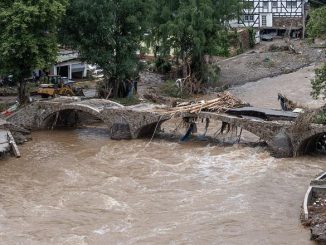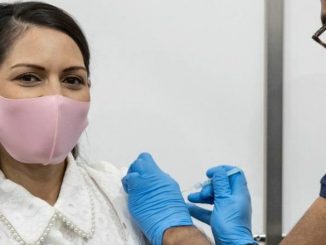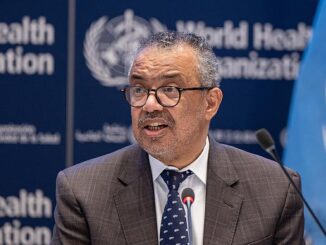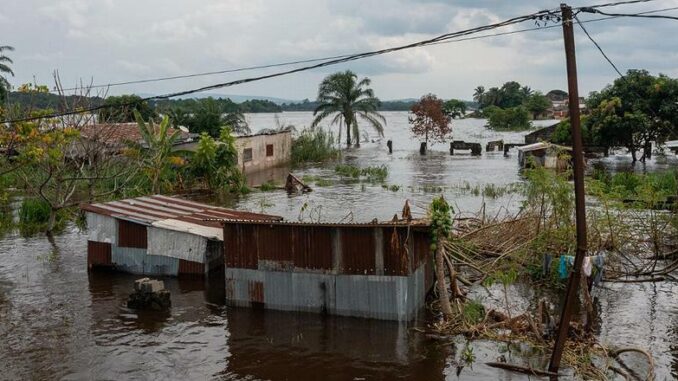
KINSHASA, Democratic Republic of the Congo, January 12, 2024 (ENS) – After two months of heavy rain, the waters of the Congo River have risen higher than anyone has seen them in more than 60 years. The flooding rains have claimed more than 300 lives and disrupted 300,000+ households in the Democratic Republic of Congo, and 17 lives in the Republic of the Congo, authorities on both sides of the river said.
Submerged in dark, stinking water, whole neighborhoods are now uninhabitable in Kinshasa, the capital and, at over 17 million people, the largest city in the Democratic Republic of the Congo.
“People are living in the water; the water is still rising, every day it’s rising, rising. We don’t really know how it’s going to end. There’s a lot of damage and houses are collapsing. Other houses are also submerged in water,” said Father Louis Iyeli, who heads the Catholic charity Caritas in the most affected region of Congo.
“Apart from the houses, there are churches, schools and health centers. People have deserted the offices, the stores, the warehouses, all that, there’s no way for people to continue working or selling,” Father Iyeli told the French Catholic news organization “La Croix.”
Across the Congo River lies the city of Brazzaville, a city of 2.7 million that is the capital of a separate country, the Republic of the Congo, where the flooding caused a state of humanitarian emergency to be declared on January 3.
More than 336,000 people here are in need of urgent humanitarian assistance now that the river has overflowed, damaging health facilities, schools, and homes, triggering landslides, and submerging vast reaches of farmland.
In the Republic of the Congo, floods have destroyed or damaged 34 health facilities, 120 schools and more than 64,000 houses. At least 17 people have died in the floods across eight departments including the capital, with more than 60,000 households affected. Six people are still missing.
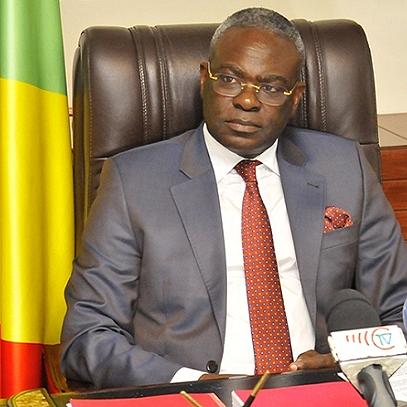
The number of people affected by the floods far exceeded those of previous years, Congolese Prime Minister Anatole Collinet Makosso said in a statement in late December 2023.
The Republic of Congo government announced the release of an emergency fund estimated at US$4 million dollars to provide aid to disaster victims and overcome the damage caused by flooding in several departments. The decision was welcomed by civil society, but the thousands of affected people need more help.
The Congo River basin floods every year between December and mid-January, according to Daniel Lwaboshi, director of the Democratic Republic of the Congo’s national river management authority, the Régie des Voies Fluviales, RVF.
In late December the RVF warned of “exceptional flooding” along the Congo River and its tributaries this year. Lwaboshi said that heavier rains, linked to climate change, have been partially responsible for this year’s exceptionally high river.
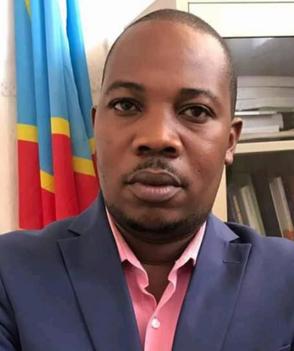
The current rainfall is twice the average recorded in the 2022–2023 season, and the water level in the Ubangi River, the largest right-bank tributary of the Congo River, also has reached an all-time high. The Ubangi marks the border separating the Democratic Republic of the Congo, with its capital in Kinshasa, from the Republic of the Congo, with its capital in Brazzaville.
Humanitarian needs are projected to rise, further worsening the plight of the flood-stricken population. The main health threats include the risk of water-borne diseases such as cholera, vector-borne diseases like malaria or dengue, and vaccine-preventable diseases such as measles.
Maternal and child health nutrition are at risk, while sexual and gender-based violence could surge, health authorities warn, adding that food insecurity, nutrition, access to health care services, as well as to safe water, sanitation and hygiene services are likely to deteriorate.
Ensuring continuity of care for chronic diseases like HIV or diabetes and mental health, while mitigating the risk of drowning and injuries remains critical,” the World Health Organizaion, WHO, said.
“WHO is committed to supporting the government to ramp up emergency response to save lives and ensure access to critical basic services,” says Dr. Lucien Manga, the WHO representative in the Republic of Congo. “We are working with partner organizations to bolster relief response, support livelihoods and limit the threat of diseases outbreaks.”
A multisectoral emergency response plan is being developed to help the affected population. Services planned include provision of food to support livelihoods and improve food security; treatment of malnutrition among children under five, provision of quality health services to pregnant and breastfeeding women; as well as improving access to clean water and sanitation services.
Working with partners, WHO is stepping up efforts to provide emergency health services to avert spread of diseases; essential medicines and life-saving medical supplies; and ensure critical quality health services through functional health facilities and mobile clinics.
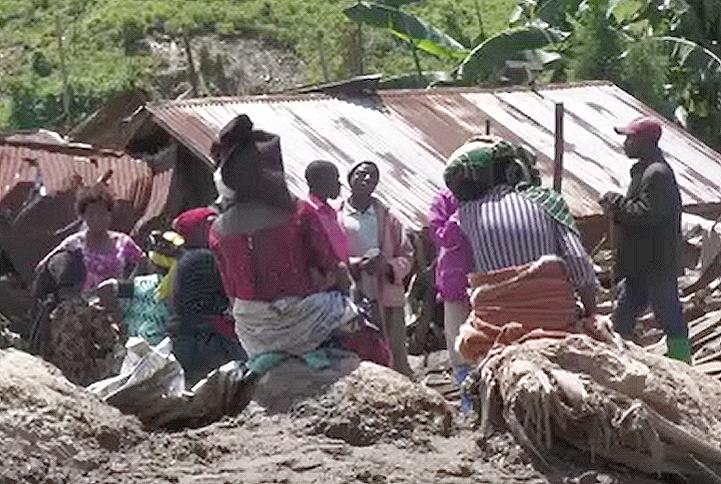
WHO is also assisting the Ministry of Public Health in setting up an early warning alert and response system for epidemics, as well as quickly deploying its national first responders team for rapid situation analysis to ensure effective relief operations.
Efforts are also being made to ensure that learning resumes under appropriate conditions in the affected areas along with the provision of psychosocial support to children and provide protection services, including prevention of gender-based violence and care for victims.
The government also announced the release of an emergency fund estimated at 4 million dollars to provide aid to disaster victims and overcome the damage caused by flooding in several departments. The decision has been welcomed by civil society, but on the ground people want action.
Jean Felis Demba-Ntelo architect, urban planner, former Minister of Public Works, and independent presidential candidate, told Africa News that the current situation is not surprising. “We encountered these problems when we drew up the master plan for the cities of Brazzaville and Pointe Noire. Let me remind you that in the 80s, we had foreseen all these problems and had said that if we maintained anarchy, we would witness this phenomenon.”
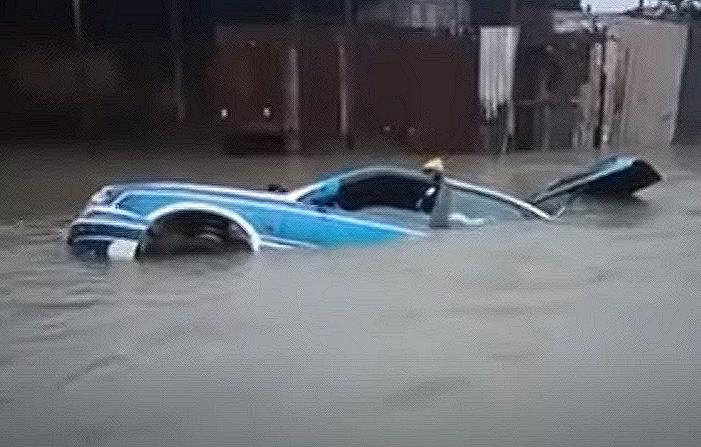
“At the time, we recommended that this area be preserved as a natural zone, and today we’ve spent two billion to help the local population, yes, but the phenomenon itself has reached a scale that requires 10 times 20 times more, and not just billions, but also an awareness of the people who are putting themselves at risk,” Demba-Ntelo explained.
The African rains are not expected to stop for months, according to meteorologists with the U.S. National Oceanic and Atmospheric Agency, NOAA.
Floods persist in Congo-Brazzaville, Congo-Kinshasa, southern Uganda, southern Kenya, southeastern Ethiopia, and southern Somalia. In Burundi, tributaries to the Lake Tanganyika have overflown, flooding maize and bean crops in the lowland areas. The observed heavy rainfall during last week maintains high risks for flooding in northern and central Tanzania. In Angola, floods have risen in the north due to continuous heavy rainfall and floods have persisted in the south.
For Africa, it’s either too wet or too dry this year. Due to a delayed start in the rainfall season, followed by insufficient rainfall, abnormal dryness exists across eastern Angola, northeastern Namibia, western and central Zambia, southern Malawi, northern Botswana, northern Zimbabwe, central Mozambique, and western and central Madagascar, where rainfall deficits have exceeded 50 mm over the past 30 days.
Featured image: Flooding in a rural area of the Democratic Republic of the Congo, January 2024 (Photo courtesy World Health Organization)
© 2024, Environment News Service. All rights reserved. Content may be quoted only with proper attribution and a direct link to the original article. Full reproduction is prohibited.

